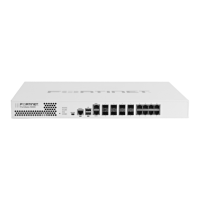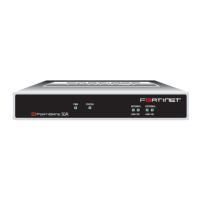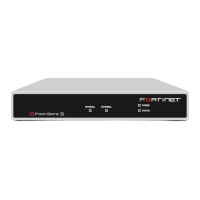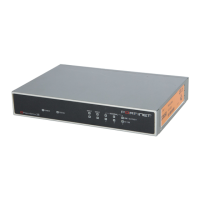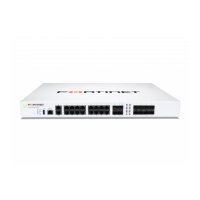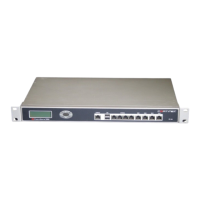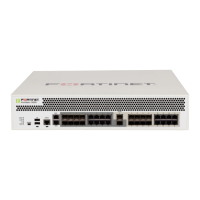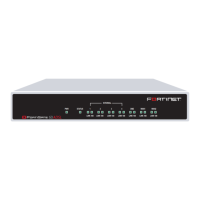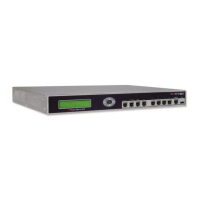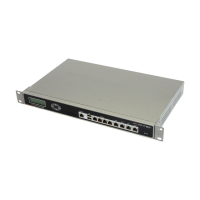FortiGate Version 3.0 MR4 Administration Guide
292 01-30004-0203-20070102
Auto Key VPN IPSEC
Creating a new phase 2 configuration
After IPSec phase 1 negotiations complete successfully, phase 2 begins. The
phase 2 parameters define the algorithms that the FortiGate unit may use to
encrypt and transfer data for the remainder of the session. During phase 2, the
specific IPSec security associations needed to implement security services are
selected and a tunnel is established.
The basic phase 2 settings associate IPSec phase 2 parameters with the phase 1
configuration that specifies the remote end point of the VPN tunnel. In most cases,
you need to configure only basic phase 2 settings.
To configure phase 2 settings, go to VPN > IPSEC > Auto Key (IKE) and select
Create Phase 2.
Local ID If the FortiGate unit will act as a VPN client and you are using peer
IDs for authentication purposes, enter the identifier that the FortiGate
unit will supply to the VPN server during the phase 1 exchange.
If the FortiGate unit will act as a VPN client and you are using security
certificates for authentication, select the distinguished name (DN) of
the local server certificate that the FortiGate unit will use for
authentication purposes.
If the FortiGate unit is a dialup client and will not be sharing a tunnel
with other dialup clients (that is, the tunnel will be dedicated to this
FortiGate dialup client), set Mode to Aggressive.
XAuth This option is provided to support the authentication of dialup clients.
If the FortiGate unit is a dialup client and you select Enable as Client,
type the user name and password that the FortiGate unit will need to
authenticate itself to the remote XAuth server.
If Remote Gateway is set to Dialup User and dialup clients will
authenticate as members of a dialup group, the FortiGate unit can act
as an XAuth server. To select Enable as Server, you must first create
user groups to identify the dialup clients that need access to the
network behind the FortiGate unit. See “Configuring a user group” on
page 330.
You must also configure the FortiGate unit to forward authentication
requests to an external RADIUS or LDAP authentication server. For
information about these topics, see “Configuring a RADIUS server”
on page 322 or “Configuring an LDAP server” on page 324.
Select a Server Type setting to determine the type of encryption
method to use between the FortiGate unit, the XAuth client and the
external authentication server, and then select the user group from
the User Group list.
Nat-traversal Enable this option if a NAT device exists between the local FortiGate
unit and the VPN peer or client. The local FortiGate unit and the VPN
peer or client must have the same NAT traversal setting (both
selected or both cleared) to connect reliably.
Keepalive
Frequency
If you enabled NAT-traversal, enter a keepalive frequency setting.
The value represents an interval from 0 to 900 seconds.
Dead Peer
Detection
Enable this option to reestablish VPN tunnels on idle connections and
clean up dead IKE peers if required. You can use this option to be
notified whenever a tunnel goes up or down, or enable the option to
keep the tunnel connection open when no traffic is being generated
inside the tunnel (for example, in scenarios where a dialup client or
dynamic DNS peer connects from an IP address that changes
periodically—traffic may be suspended while the IP address
changes).
When the Dead Peer Detection option is selected, you can use the
config vpn ipsec phase1 (tunnel mode) or config vpn
ipsec phase1-interface (interface mode) CLI command to
optionally specify a retry count and a retry interval. For more
information, see the FortiGate CLI Reference.
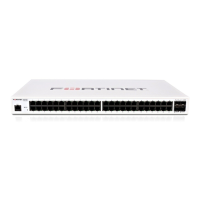
